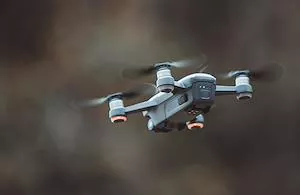New Regulations on the Use of Drones
On December 31, 2020, the final text of the Regulations on Unmanned Aerial Vehicles (UAV) and Unmanned Aerial Vehicles Systems (UAVS) approved by the National Civil Aviation Administration will enter into force.

The National Civil Aviation Administration (the “ANAC”, after its acronym in Spanish) recently issued Resolution No. 880/2019, setting forth the "Regulations on Unmanned Aerial Vehicles (UAV) and Unmanned Aerial Vehicle Systems (UAVS)" (the "Regulation"). According to the Resolution, the date of entry into force of the Regulations was to have been July 1, 2020. However, Resolution No. 178/2020 published on that date postponed it until the end of 2020.Therefore, the Regulations will enter into force as of December 31, 2020 and, consequently, the provisional regulations that had been passed by the ANAC in Resolution No. 527/2015 will be repealed.
The Regulation sets out the operational requirements for UAVs and UAVS, commonly known as "drones", excluding those affected to military forces.
It establishes a new classification of drones according to, among other criteria, the nature of their use (recreational, commercial, scientific, security or sports) and weight (classes A, B, C, D and E, the latter for those exceeding 150 kg).
One of the main obligations introduced by the Regulation is the requirement to register all UAV or UAVS in the ANAC's National Aircraft Registry prior to any operation, with the sole exception of drones for recreational use up to 500 grams of MCTW, as well as any transfer or assignment of use to a third party. Those vehicles that are already registered will continue to be registered and, as of the effective date of the Regulation, the registry will cancel the numbers of those vehicles that no longer require registration.
The Regulation contemplates two classes of operations depending on whether the visibility is direct or not. Commercial, scientific, sports and security drones must request authorization to operate without direct visibility. Moreover, the Regulation prohibits the use of drones over crowds or agglomerations of people, unless they are approved.
Unlike the provisional regulations, the new text determines more precisely the limits of operations by specifying prohibited areas, conditions and flight distances. For this purpose, the Air Navigation Service Provider is the only competent organization to grant authorizations relating to air navigation within controlled airspace.
- Personal Data
Operation with drones is subject to the national laws and regulations on personal data protection. Therefore, it will generally be necessary to seek the prior consent of the owners of the data collected by the drones or the images captured.
- Liability and Insurances
The Regulation provides that the pilot in command, the operator, the owner —if there were no assignment of use duly registered— and/or whomever carried out the operation or facilitated it, are liable for the operation of the drones.
Those who operate drones weighing more than 5 kg for recreational purposes, drones for generic commercial activity, and drones for scientific use, must take out liability insurance for any damage they may cause, which may not be less than that required under the general conditions determined by the National Superintendency of Insurance. On the other hand, those who operate drones of up to 5 kg for recreational purposes are not required to take out insurance.
As for the UAV and UAVS used for cargo transport and security purposes, their respective users must have an insurance policy that covers potential damages, which may not be less than the coverage required by Section 160 of the Aviation Code.
- Operational Requirements
In order to carry out operations for commercial purposes, such as air work or cargo transport, the drone operator must have the UAV Operator Certification (the “CE-VANT”, after its acronym in Spanish) issued by the ANAC, and may only carry out cargo transport if authorized to do so. Likewise, prior to obtaining the CE-VANT, every drone operator for commercial use is required to develop an Operations Manual.
With the exception of recreational UAV users, all UAV users must have authorization to operate prior to the flight. Pilots using scientific UAV shall do so in segregated and uncontrolled airspace areas and away from the population.
In addition, in the case of UAV for sports use, the Regulation establishes the obligation to operate within certain vertical limits. As these are drones for sports use, the event organizer must have insurance for sports events in addition to the mandatory insurance for the use of drones. It is important to mention that the organizer must have the operation authorization before promoting or marketing the event, which will also be exclusive for each event.
All crew in command of UAV and UAVS weighing more than 5 kg for recreational use and drones for commercial, scientific, sports and security purposes must obtain the Remote Pilot Certificate in order to operate them. Also flight instructors must obtain their respective certificates and meet certain requirements established by the Regulation.
Foreign remote pilots may use the authorization of their country of origin provided that it is translated and apostilled. In case the country of origin does not grant such authorization, the user may apply for it following the requirements of the Regulation. In any event, the ANAC may grant exceptional authorizations limited in time to those users interested in carrying out scientific tasks in an isolated and unusual manner.
Finally, the ANAC may request the assistance of public forces to prevent, stop or impede the operation of an UAV or UAVS that does not comply with the regulations, flight rules or represents a danger.
This insight is a brief comment on legal news in Argentina; it does not purport to be an exhaustive analysis or to provide legal advice.